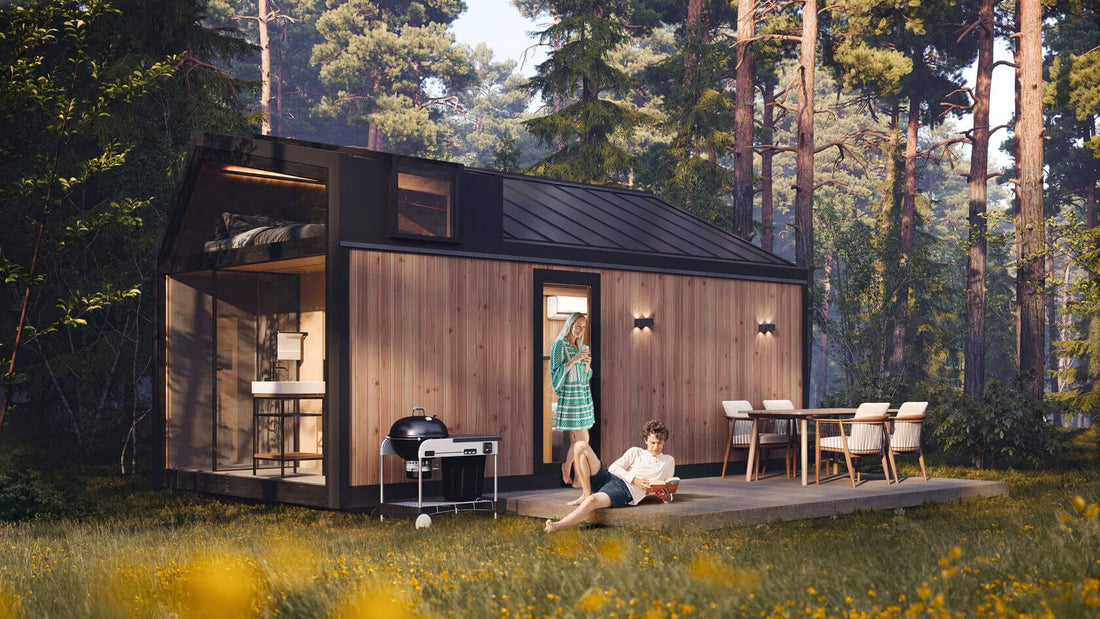
Cyprus Prefab Housing 2025–2031: 5 key takeaways from our study
As of September 2025, the prefabricated housing market in Cyprus is in a robust growth phase, transitioning from a niche alternative to a mainstream solution for residential, investment, and rental needs.
This expansion is primarily fueled by a structural housing shortage where property demand consistently outpaces supply, causing property values and rental yields to rise significantly. The market’s appeal is amplified by a confluence of favorable economic conditions, including the stabilization of construction material costs in 2024 and cooling inflation, which settled around 2%.
Key growth drivers are the inherent cost-effectiveness and rapid construction timelines of prefabricated homes. Estimates show prefab construction can be at least 30-50% cheaper than traditional builds, with some local players delivering homes in as little as three months—a compelling proposition in a market where conventional projects can take over a year. Demand is further stimulated by a significant government subsidy scheme offering grants of €20,000 to €50,000 for young, first-time homebuyers, making this an opportune moment for market entry and expansion (2024-25).
The overall market outlook is positive, with projections indicating steady growth between 2025 and 2031. The container (mobile) homes sub-segment is particularly dynamic, valued at approximately €15-20 million annually and projected to grow at a 12-15% CAGR through 2028, especially in coastal tourism hubs. However, success requires navigating a complex regulatory landscape, managing supply chain risks, and differentiating on service and quality beyond just price.
1. Housing-Supply Crunch Creates an Irresistible Pull for Prefabricated Solutions
Cyprus is facing a significant housing shortage where demand consistently outpaces supply, creating a highly favorable environment for rapid housing solutions. This imbalance has pushed property sales to a 17-year high in the first seven months of 2025 and is driving property values upward, with experts predicting continued price rises into 2025. The intense demand is particularly acute in high-demand rental and tourist markets such as Limassol, Larnaca, and Ayia Napa, where rental demand has surged. Prefabricated homes, with delivery times as short as 3 months, offer a direct solution to this market gap, positioning them as a critical tool for both homeowners and investors seeking to capitalize on the boom.
2. Cost Advantage and Stabilizing Material Prices Create a Window of Opportunity
Prefabricated homes offer a significant cost advantage, with estimates suggesting they are at least 30-50% cheaper than conventional construction. This is particularly attractive in a market where realistic traditional building costs range from €1,700 to €2,500 per square meter. This cost-effectiveness is amplified by a favorable economic environment where construction material costs have stabilized after previous hikes, with prices for key materials like structural steel and iron dropping by 6-8% in 2024. While the cost advantage can be moderated by logistics expenses for imported modules, the current stability in material prices presents a strategic window to lock in project costs and maximize margins.
3. Government Incentives and VAT Relief Substantially Lower Buyer Costs
The Cypriot government is actively stimulating the housing market with financial incentives that directly benefit prefab home buyers. A key subsidy scheme introduced in late 2024 provides one-time grants between €20,000 and €50,000 for individuals and couples up to age 41 who are building or purchasing their first home. This is complemented by a reduced VAT rate of 5% (down from the standard 19%) for eligible first-time homebuyers, which can significantly lower the total acquisition cost. These incentives, combined with grants for energy-efficient upgrades, make prefabricated homes a financially compelling option for the target demographic of young families and first-time buyers.
4. Container (mobile) Homes Emerge as the Market’s High-Growth Engine
While the overall prefabricated building market in Cyprus is projected to see steady but tapering growth (from 2.46% in 2025 to 1.34% by 2029), the container (mobile) homes sub-segment is a standout performer. This niche is currently valued at €15-20 million annually and is projected to grow at a robust CAGR of 12-15% through 2028. This rapid growth is fueled by strong demand in coastal tourism hubs like Limassol and Paphos, which account for 60% of container home installations, primarily for the lucrative holiday rental market. This creates a specialized, high-margin opportunity for players who can offer turnkey rental solutions.
5. Navigating Regulatory Complexities and Supply Chain Risks is Key to Success
Success in the Cyprus prefab market is not without its challenges. A significant hurdle is the complex and fragmented regulatory landscape, with municipal building codes varying between districts. All structures must adhere to strict Cyprus National Building Regulations (CNBR) and EU standards, including requirements for seismic resilience, high thermal insulation (R-values ≥ 4.0 m²K/W), and stringent fire safety classifications (Class A2-s1,d0). Furthermore, the market is vulnerable to supply chain risks, including volatile international freight rates, port congestion, and shortages of skilled labor for on-site assembly. These factors can erode the core benefits of speed and cost if not managed proactively.
Want the full report? Download it from the main page (block in the bottom).
